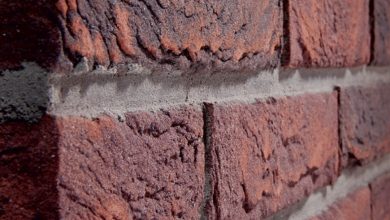Why Do Masons Wear Blue
Masons wear blue because of the significance and symbolism associated with the color.
Blue has been historically linked to sacred attributes and has been used in various religious and cultural contexts.
It symbolizes qualities such as truth, purity, wisdom, and universal friendship.
In Freemasonry, blue is used in lodge decor and attire as it aligns with the teachings and tenets of the organization.
Additionally, the color blue holds a historical connection to the Holy Scriptures and Jewish religious practices, particularly through the use of the blue dye called techelet.
The color blue continues to hold cultural and symbolic importance in modern times, as seen in its association with the Israeli national flag.
Did You Know?
1. Blue represents fidelity and truth in Masonic symbolism, which is why Masons wear blue clothing as a reflection of these virtues.
2. The color blue has been associated with protection and mysticism throughout history, and is believed to shield the wearer from negative energies and evil spirits.
3. In ancient times, blue pigments were rare and expensive, making blue clothing a luxury reserved for the wealthy and powerful. Masons wearing blue showcased their elevated status within society.
4. The shade of blue worn by Masons, often referred to as “Masonic blue,” varies among Masonic orders and jurisdictions, with some opting for a darker shade while others prefer a lighter hue.
5. While the origins of Masons wearing blue are not definitive, it is believed to have originated from the importance placed on symbolism and allegory within Masonic tradition, as well as a desire to create a distinct identity for Masons within society.
The Significance Of Blue In Religious And Cultural Contexts
Blue is a color that holds great significance in various religious and cultural contexts. Across different faiths and cultures, blue is often associated with divine attributes and has been a symbol of spirituality, wisdom, and truth.
In Christianity, for example, blue is associated with the Virgin Mary, representing her purity and virtue. In Hinduism, the blue-skinned god Krishna is revered as a deity of love and compassion. Similarly, in Chinese culture, blue is associated with the heavens and represents the divine.
Blue also holds importance in Druid beliefs, where it is seen as a color that connects individuals with the natural world and the spiritual realm.
Blue’s Historical Usage In Sun Worship, Egyptian And Babylonian Culture, Chinese And Hindu Traditions, And Druid Beliefs
The historical usage of blue in various cultures reveals its deep-rooted significance. In ancient Egypt and Babylon, blue was associated with the sun. The Egyptians used blue pigments in their artwork and ceremony to represent the sky and the divine. In Chinese and Hindu traditions, blue holds a similar association with the heavens and spiritual realms. The color was often used in religious rituals, garments, and artwork to symbolize transcendence and higher states of consciousness. Additionally, in Druid beliefs, blue was seen as a symbol of harmony with nature and a connection to the spiritual world. It was believed that wearing blue could enhance one’s ability to communicate with the divine and the natural elements.
Symbolism Of Blue In Art, Royal Heraldry, And Representation Of Humility, Fidelity, Hope, And Faith
The symbolism of blue extends beyond religious and cultural contexts and can be found in art and royal heraldry. In art, blue is often used to evoke a sense of calmness, tranquility, and serenity. It can represent the depths of the ocean, the vastness of the sky, and the vastness of the universe. In royal heraldry, blue is associated with power, loyalty, and nobility. It is frequently used in crowns, coats of arms, and flags to signify the authority and prestige of a ruling family or lineage. Blue also represents humility, fidelity, hope, and faith, making it a color that conveys virtues and positive qualities.
Blue In Masonic Lodges And Its Resemblance To Freemasonry’s Teachings And Tenets
In Masonic lodges, the color blue holds significant importance. Blue is the predominant color used in Masonic regalia, aprons, and banners. It is believed to represent the universality of Freemasonry, as blue is a color that transcends borders and cultures. It also represents loyalty, truth, and moral principles, which are core tenets of Freemasonry. Blue is seen as a symbol of the enlightenment and the search for truth and knowledge. It is a reminder to Freemasons of their duty to uphold the virtues and principles of the Order.
Historical Usage Of Blue In Different Orders And Its Connection To Jewish Religious Practices
The historical usage of blue in different orders and its connection to Jewish religious practices further emphasizes the significance of the color. In Jewish traditions, blue holds deep religious symbolism. The color blue is associated with the divine and is mentioned numerous times in the Holy Scriptures. In Jewish garments, a particular blue dye called techelet was used. This dye was derived from a specific sea creature and was reserved for garments worn by high-ranking priests and royalty. The use of techelet in Jewish religious practices represented the connection between the divine and the earthly realm. It was a visible reminder of the divine laws and the importance of upholding them.
The rediscovery of techelet production in modern times has sparked a renewed interest in its symbolism and significance. Today, techelet is used in Jewish culture as a symbol of Jewish identity and heritage. It is also prominently featured in the Israeli national flag, representing the connection between the modern state of Israel and its ancient roots.
In conclusion, the color blue has held a significant place in religious, cultural, and Masonic contexts throughout history. Its symbolism of truth, purity, wisdom, and universal friendship make it a color that resonates with individuals seeking spiritual enlightenment and moral guidance. Whether it is in religious practices, artistic expression, or Masonic symbolism, blue continues to hold a special place in human history and aspirations.
Check this out:
Frequently Asked Questions
What does the color blue mean in Masonry?
In Masonry, the color blue holds significant symbolism. It represents the celestial blue vault of heaven, embodying notions of immortality, eternity, chastity, and fidelity. Just as the sky stretches infinitely above us, the color blue serves as a reminder of the unending nature of life. It symbolizes the purity and loyalty that Masons strive to uphold in their journey towards enlightenment. By donning the color blue, Masons honor the virtues of eternal life and unwavering devotion.
What does the blue Lodge Masonic ring mean?
The blue Lodge Masonic ring holds a significant meaning within Freemasonry. It represents the values of integrity and wisdom that are upheld by the members of the fraternity. Often adorned with the square and compass symbol, the blue Lodge ring serves as a reminder to Masons of their commitment to lead a just and morally upright life. The inclusion of the letter “G” within the design further emphasizes the importance of geometry as a symbol of knowledge and enlightenment in the Masonic tradition.
What color suits do Masons wear?
Freemasons typically wear dark suits during their gatherings. Although not mandatory, many Masons prefer black suits for their versatility and formality. This choice allows them to blend seamlessly with various occasions and showcases the smart and elegant attire embraced by Freemasons worldwide. The color of the suit is not specifically prescribed but opting for a dark suit is a common and practical choice among Masons.
What are the blue degrees in Freemasonry?
The blue degrees in Freemasonry refer to the degrees conferred within the Craft Blue Lodge. These degrees include the Entered Apprentice, Fellowcraft, and Master Mason degrees. The Craft Blue lodges are governed by national or state Grand Lodges, distinct from the Scottish Rite. The blue degrees serve as a foundation for Freemasons, providing a progressive initiation into the principles and teachings of the fraternity.

